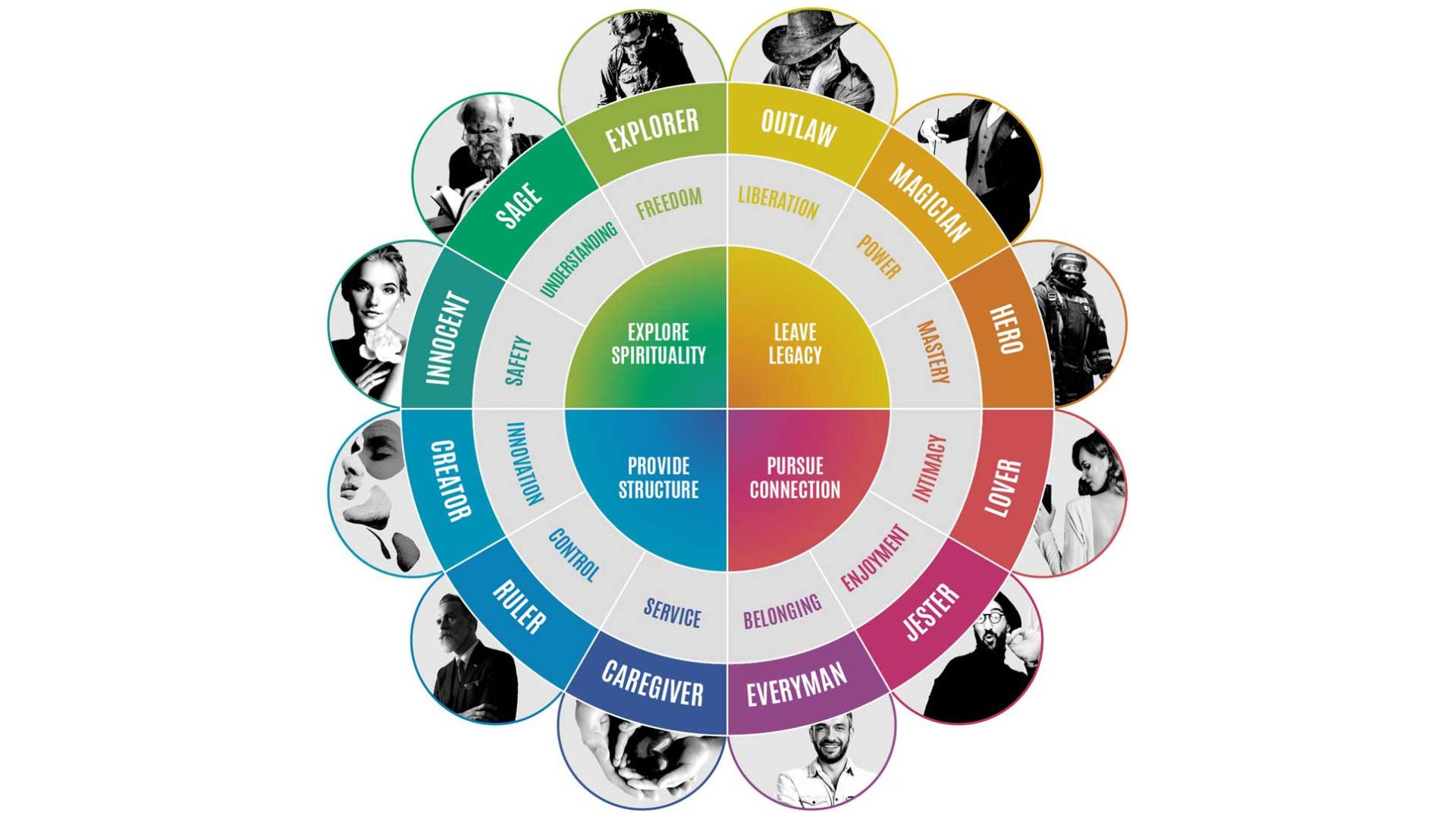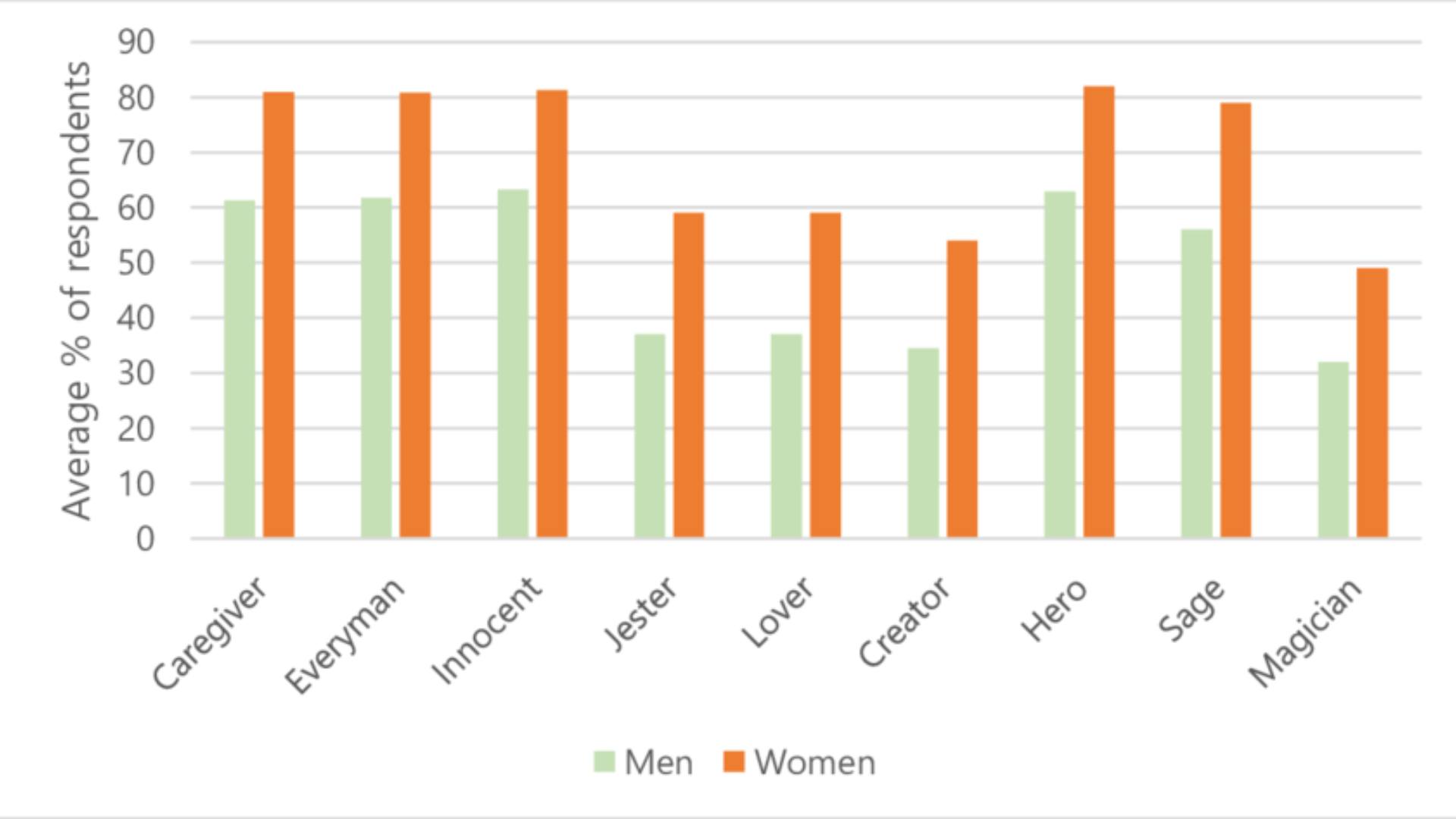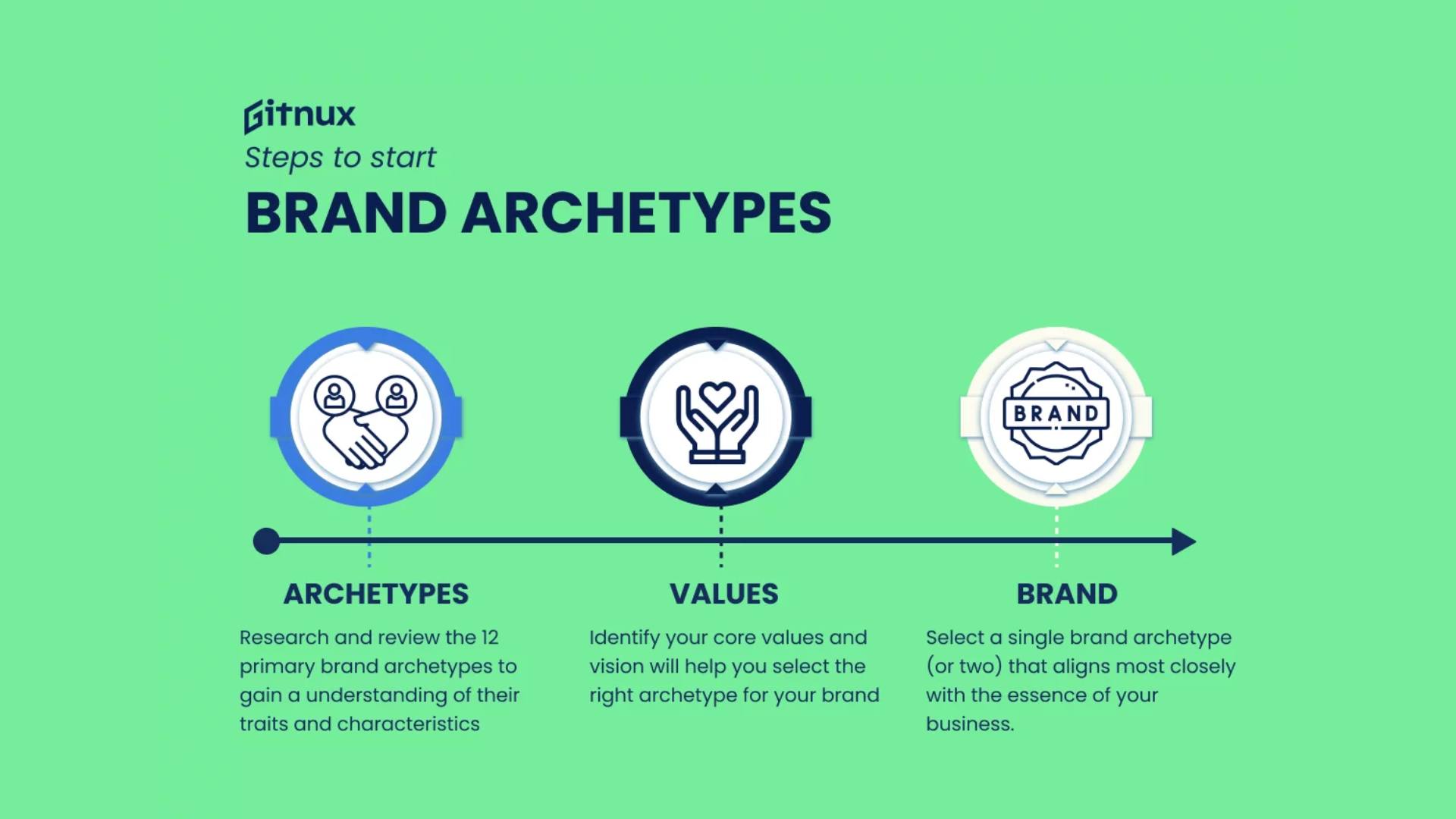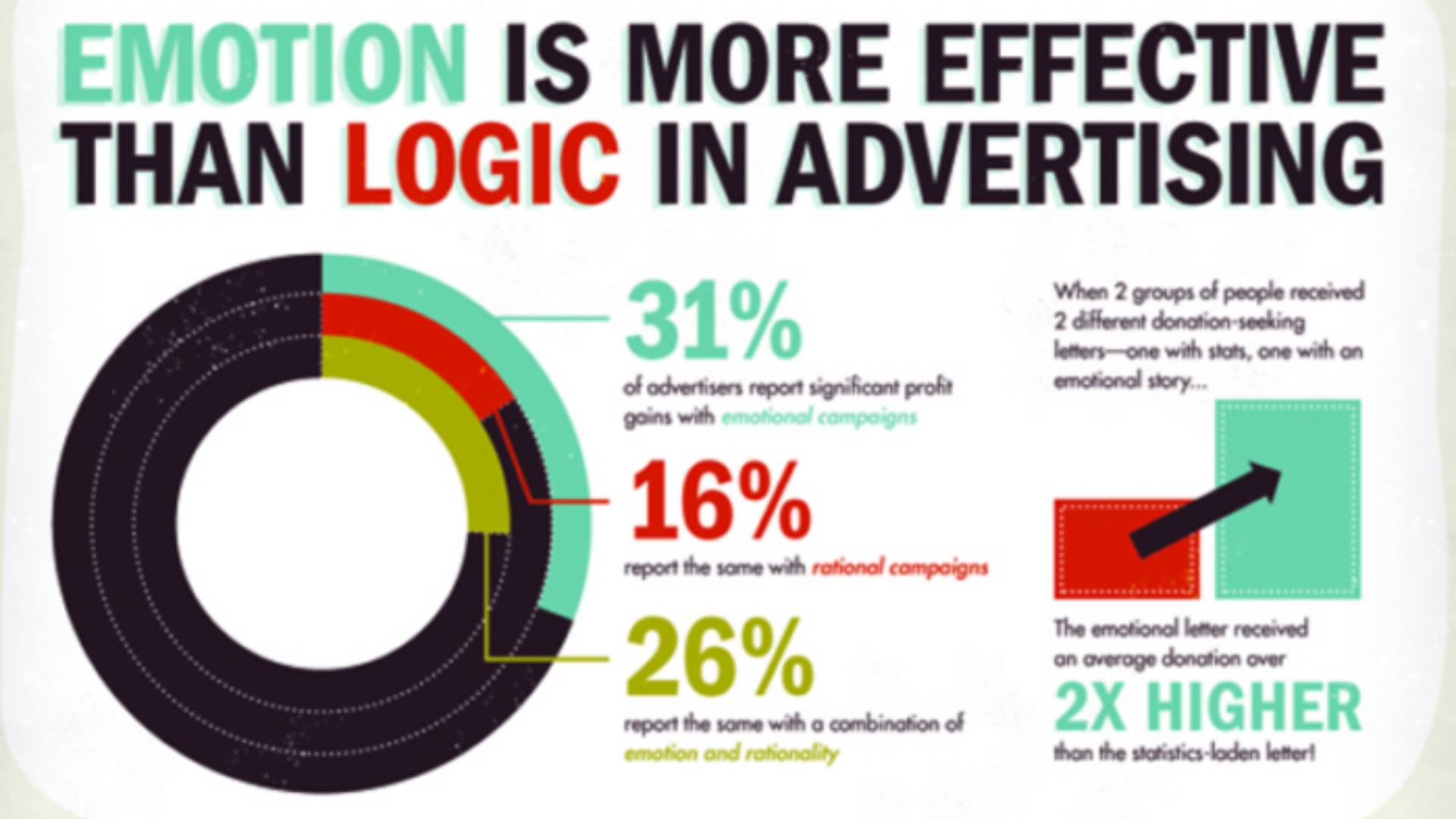Robert Burns once wrote, Oh, would some power the gift give us, To see ourselves as others see us! This is something many business owners wonder: how do people see your brand? Do they perceive you in a positive or negative way? In the fast-moving world of modern business, many marketers and other professionals look to the world of psychology to answer these questions.
In particular, they investigate what your brand archetypes are and how they can use those archetypes to help promote your business. Having an archetype associated with your brand can have a very positive effect on how customers perceive you. Just what are brand archetypes though? And how can you use them to your advantage?
What are Brand Archetypes?

Image sourced from visualcapitalist.com
Based on Jungian psychology, brand archetypes link a number of character traits found in people with your brand. It can be very useful as it can allow you to build a stronger relationship with your customers (and potential customers) that is based on identification with those traits and on emotional relationships.
To give some examples, here are the 12 brand archetypes and brands that are associated with them. Bear in mind that if you are operating multiple sites, then you may need to consider multi-site management of your archetypes, especially if each site has its own archetype.
- Creator: Associated with brands such as Apple and Lego, this archetype is linked with innovation and vision and an ability to ‘think outside the box’
- Sage: An archetype that links with the idea of seeking out knowledge. Brands linked with this include Google and the BBC
- Caregiver: Unsurprisingly, traits of caring and nurturing are closely associated with this archetype. You could think of brands such as the NHS in the UK or global organizations such as UNICEF
- Innocent: This character trait is often linked to the idea of spreading happiness. Brands that might spring to mind include Dove and Innocent
- Jester: Unsurprisingly, this is an archetype associated with fun and a light-hearted approach. Brands such as Budweiser or Skittles would fit into this category
- Magician: Magic is all about making dreams come true. Disney would be a great example of this, as would a company such as Polaroid
- Ruler: Having a ruler archetype could mean you (and others) view your business as the creme de la creme. Think about brands such as Rolls Royce or Rolex
- Hero: Heroes are all about right and wrong and rising to any challenge they are presented with. You could associate brands such as Nike or Adidas with this archetype as they always have a strong sense of social justice
- Everyman: The boy/girl next door archetype that many people can identify with and trust. Brand archetypes in this category include Tesco and Ford
- Rebel: The rebel archetype is all about challenging the status quo and finding new ways of doing things. Think about organizations such as Uber or Greenpeace
- Explorer: Boundaries need to be pushed sometimes, and this archetype is the one most likely to do it. Brands that are commonly seen as being explorers include NASA and National Geographic
- Lover: Who doesn’t like a little love? This is a brand archetype that is often associated with intimacy. As you might expect, brands in this category include underwear brands such as Victoria’s Secret or Anne Summers.
Different archetypes have different resonance with particular customer sectors. For instance, the following chart shows the most popular brand archetypes in masculine-leaning ads.

Image sourced from researchgate.net
4 Tips to Curate Effective Brand Archetypes For Your Business
So, that list may have given you something to think about, and where you see your own brand may have come as a surprise (or it may have confirmed how you already felt about your brand). If you’re a larger organization, it may even be the case that different parts of your business fit into different archetypes. The question is: how do you use those archetypes to your advantage?
The first thing to note is that your identified archetype and your brand personality should be two separate things. Archetypes can be stereotypical in many cases, and you want that to evolve into a personality that says more about your brand than just pigeonholing it.
Audit Your Mission Statement and Declared Values
What is it you want your brand to achieve (outside of great sales and revenue figures)? The sector you’re operating in could make it easy to identify your archetype and your personality.
Example: if you’re running a healthcare company, then your archetype will be the caregiver, and you have a starting point to build a more developed personality.
Your mission statement could cover your addressing injustices, and your values could include factors such as empowerment and integrity. The whole idea is to push those positives when marketing or giving your business any form of exposure. You could write blog pieces that outline your work or have case studies on successful cases you have fought.
However, remember that your archetype is only the starting point. Audit what your declared mission statement and values were and see what you can add to your foundation.
Example: a law firm that offers a wide range of pro bono or low-cost services through a series of virtual law offices. Your original archetype in this case would be ‘hero,’ but you can expand on that.
Identify Your Audience

Of course, this is one of the golden rules when it comes to many aspects of your business. But as you build a brand archetype/personality, it can be especially crucial. It can affect not only what your final brand personality is but how you present it and how you communicate and engage with your identified audience. You should be monitoring your content so that it always meets your audience's needs.
Leveraging business tools for audience analysis can provide invaluable insights for refining your archetype and tailoring your messaging effectively.
You also need to consider that your company may fit into more than one of the categories listed. You will need to think about how your messaging and engagement straddle those different categories and how they can help engage with any identified audience. Do they identify with you? Do they see you as an established authority in your particular area of business?
Sticking with the law firm example, you may identify that much of your audience falls into certain socioeconomic groups. They may not have a high disposable income, nor may they want to read jargon-heavy articles and blogs. But they are still YOUR audience and can help shape your brand archetype.
Utilizing market research to delve into their preferences, challenges, and communication preferences can provide invaluable insights for refining your archetype and tailoring your messaging effectively.
When it comes to technology, you need to ensure that any legal software you use enables you to communicate this archetype to your audience and allows you to develop it as needed. The ultimate aim is to have people recognize you as ‘someone’ they can trust and that, if they need you, they know you will be reliable, no matter what service you provide. So your software needs to support this direction.
Of course, communication is key to engagement too. You may want to reflect your particular personality in this area, offering convenient ways for your audience to communicate with you (and vice versa). Do you offer cloud calls, emails, and so on? A good brand archetype should include the concept of your business being easily accessible.
Seek Out the Emotional Connection

Image sourced from neilpatel.com
Relationships are based on trust, but they’re also based on emotion. Customers will often show loyalty to a brand not just because of what they do but how they do it too. If you think back to Victoria’s Secret and the Lover archetype, they connect with both male and female customers on that emotional level.
Women, whether in a relationship or not, love to feel good about what they are wearing. And men in a relationship, well, they may have selfish reasons for buying for their partner, but it’s still an emotional connection. Establishing - and maintaining - that emotional connection is all about how you present your brand and how you tell stories to your audience.
You may think that not every business sector is able to establish emotional connections, but that’s simply not true.
Example: selling a customer a domain name may seem like an emotionless transaction, but in fact, it’s far from being so. If you think about it, the customer had to trust you to be a good vendor, and trust is a very important emotion, especially in business.
So, as part of building good brand archetypes, you should be thinking about what emotions are important to you and your audience. Once you identify the most important brand/audience emotions, you can then move on to ways of communicating those emotions through your content and other means.
To gauge the effectiveness of your chosen brand archetype and its emotional resonance, consider conducting brand awareness surveys periodically.
Take the Archetype Quiz
Now that you've learned about the importance of brand archetypes and how they can impact your business, it's time to put this knowledge into action. One of our partners, Trivera, designed a special Brand Archetype Quiz to help you identify the archetype that best aligns with your brand's personality.
Taking the quiz is simple and fun. Just click the "Take the Quiz" button below, answer a few thought-provoking questions, and discover which brand archetype resonates most with your business. This step can be a valuable starting point in your journey to curate an effective brand identity.
Once you've completed the quiz, you'll gain insights into your brand's potential archetype and how it relates to your audience. Use this newfound understanding to refine your brand strategy and connect with your customers on a deeper level.
Remember, your brand archetype can evolve over time, so revisiting this quiz periodically can be a helpful exercise to ensure your brand stays aligned with your goals and values.
The Takeaway

Free to use image from Pixabay
Establishing a strong brand archetype really does involve having the ability to see how others perceive you. While mission statements and company values may have shaped the initial direction of your business, a brand personality can complement those early developments. Brand archetypes are all about bringing existing customers closer but also attracting new customers.
It’s also worth noting that brand personalities do not need to be static. If you decide to change the core model of your business, any rebranding should revisit your work on brand archetypes and see if there has been any change there too. While frequent changes could confuse your target audience, one that is clearly explained and understandable won’t alienate any of your customers.
Sources:
Header Image Sourced From Trivera
